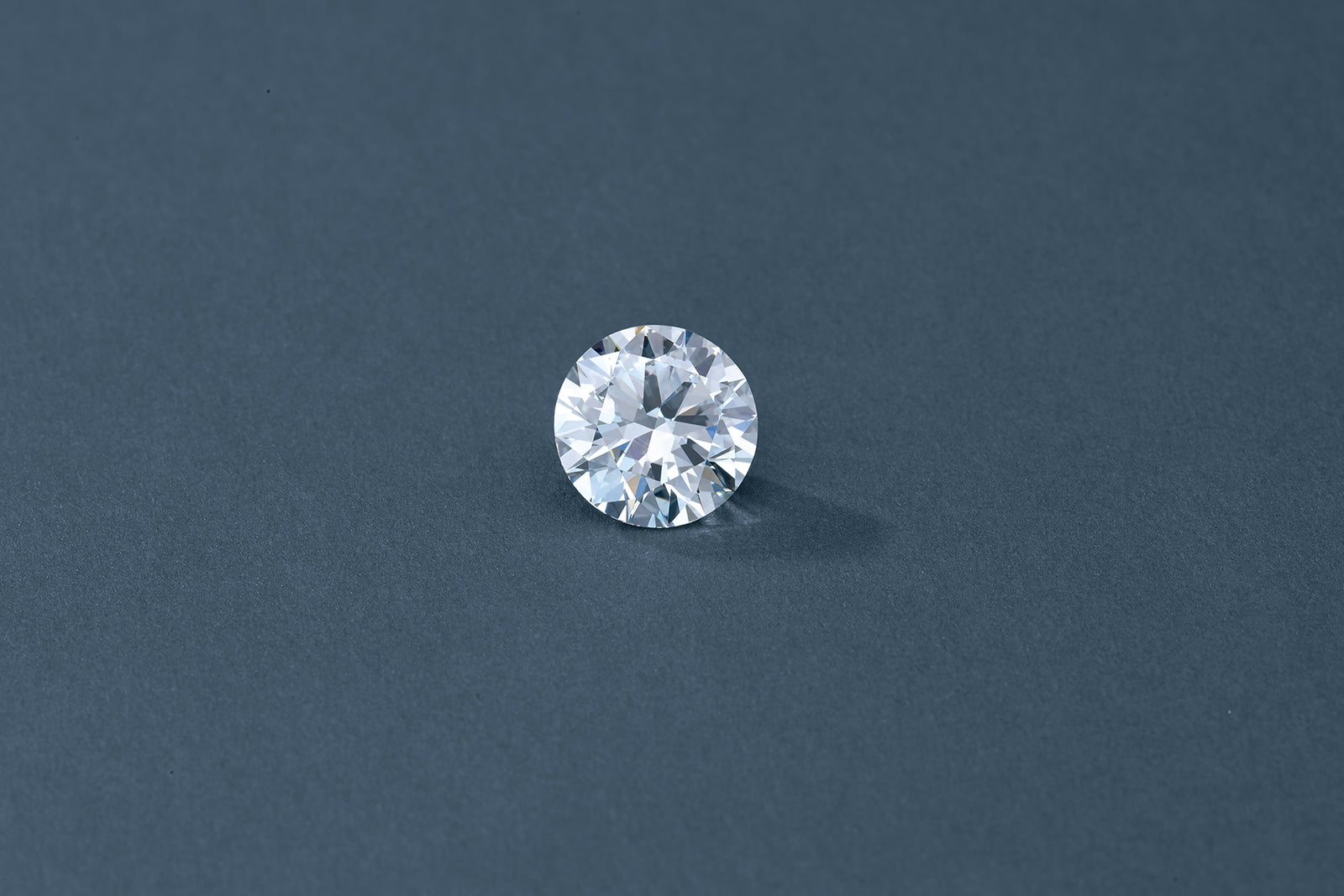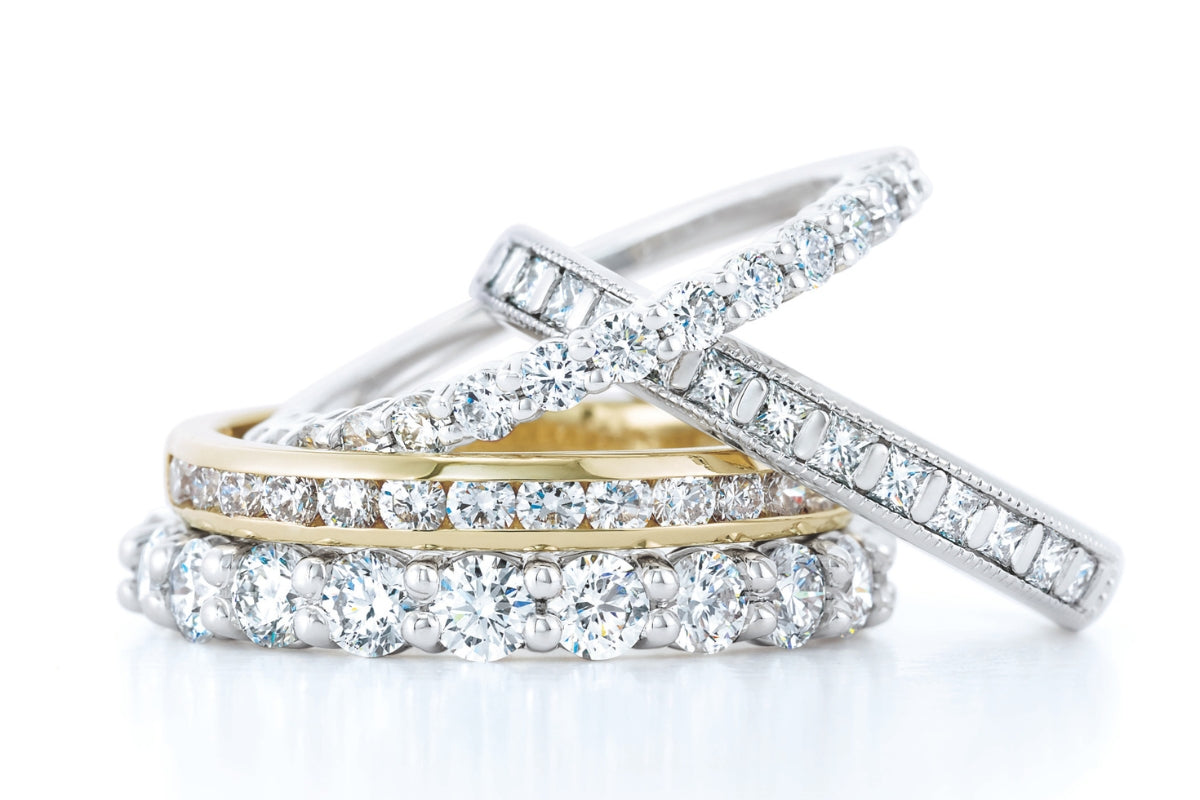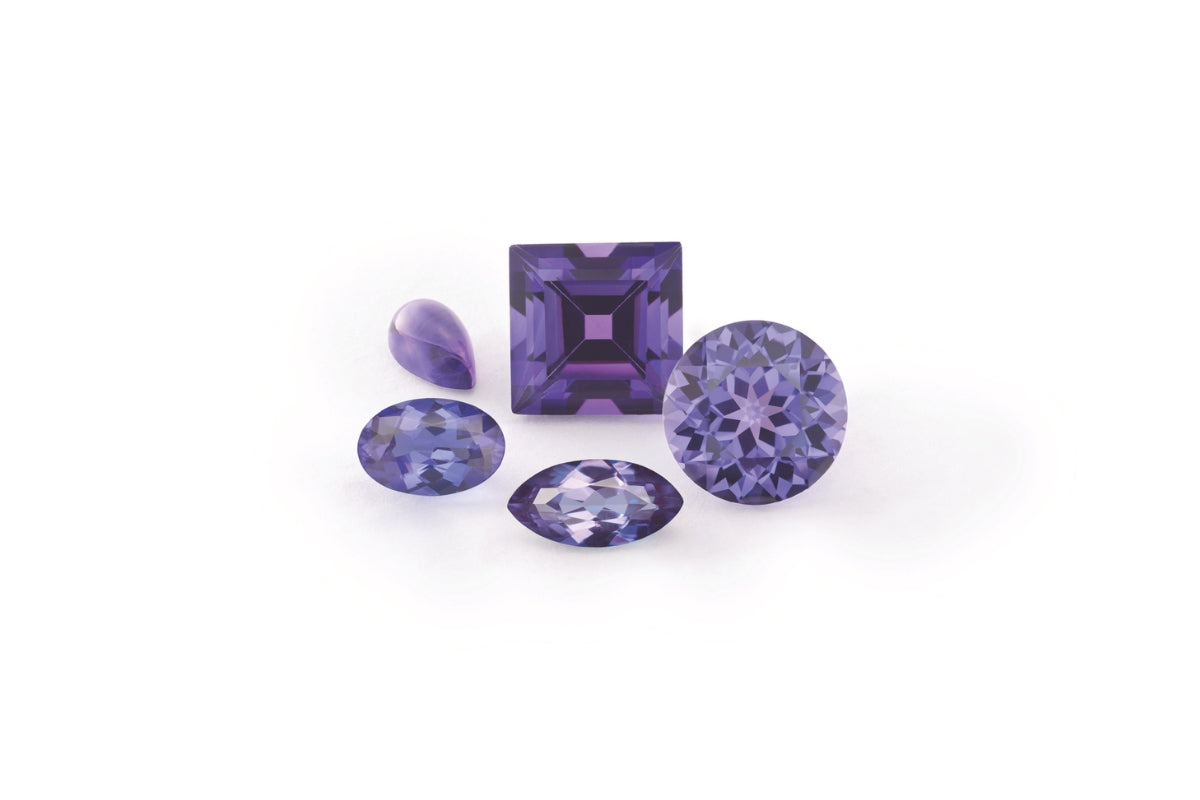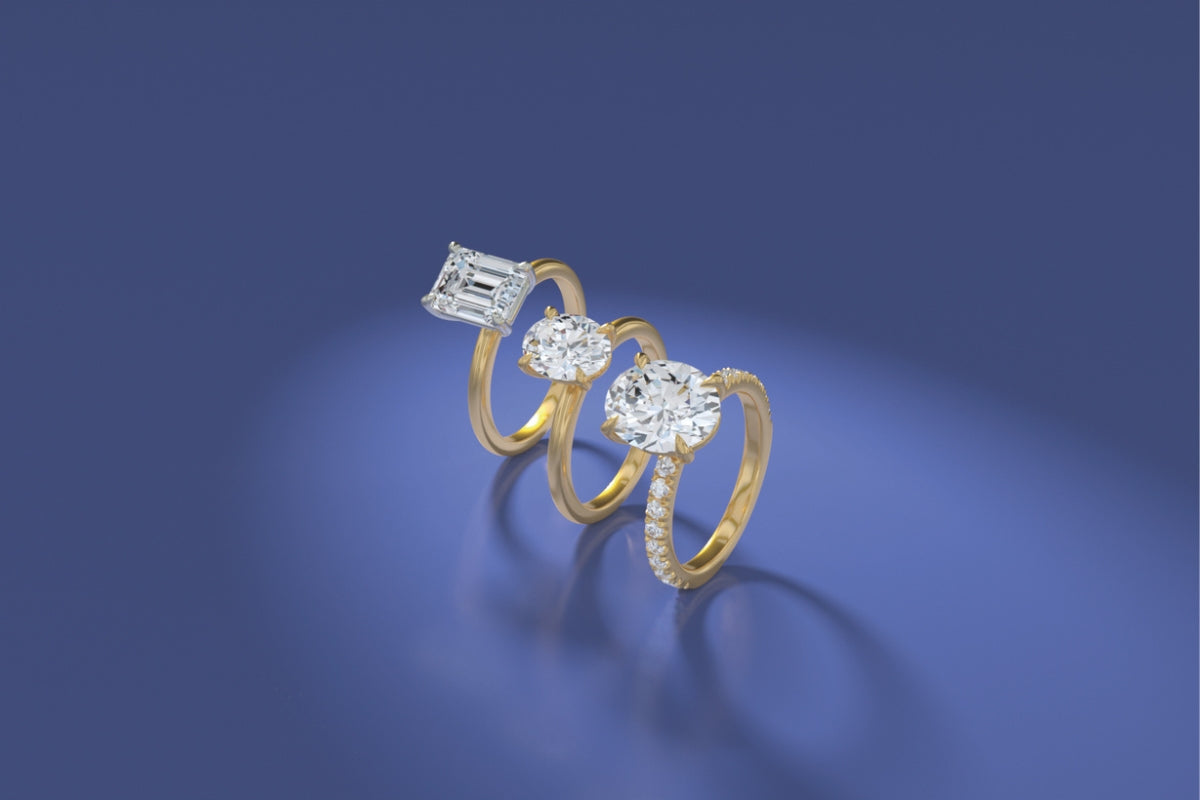For centuries, diamonds have fascinated people from all walks of life. Their mystique and aura are often simulated in alternative materials and gemstones. It’s hard not to smile when looking at a diamond. It makes sense though, they’re exquisite and have their own unique characteristics that are often imitated, but never duplicated in other gemstone formations. In fact, many “simulants” exist today that are inferior, often made up of various glass and plastics. At a glance, on the surface, they may exhibit the appearance of diamond, but upon further inspection and testing, they fall short of the coveted attributes that make up diamond. Today, we’ll be answering this age-long question of what a diamond is made of while reviewing some history, and diving into what makes a diamond, well, a diamond.
A common curiosity holds true: “What is a diamond made of?” The answer is quite simple and may surprise you. For hundreds of years, people have been curious about what complex experiment or formula would uncover the element(s) associated with what diamond is composed of. Without knowing this certainty, then what exactly was a diamond anyway? It’s a question that scientists had been challenged with long ago to uncover and define what this substance or so called “diamond material” was made up of. It wasn’t until nearly the end of the 1700’s that this question was answered.
According to the Gemological Institute of America (GIA), it wasn’t until 1772 that French chemist Antoine-Laurent Lavoisier set out to explore this age-long question and important discovery. His methods were to place a diamond into a jar filled with oxygen and by means of using a magnifying glass, directed sunlight towards the stone, thinking that burning the diamond would create some sort of remnants of ash. To Lavoisier’s surprise, the only byproduct of this experiment was gas...carbon dioxide gas. This was strongly correlated to his later experiments, which instead of burning diamond, he chose to burn charcoal. The result was the same; carbon dioxide gas!
Apparently, this wasn’t conclusive enough, so many years later, an English chemist by the name of Smithson Tennant continued Lavoisier's research and experimentation. He did some reverse engineering by converting weights and measures of charcoal and diamond to the same volume of carbon dioxide. Thus, he showed the essence of both materials being the same but in different forms. Having published these results in 1797, it wasn’t until twenty years later that his findings were accepted into the scientific community. The conclusion? Diamond is made of carbon!
Carbon's atomic symbol is C and number is 6 on the Periodic Table of Elements. Diamond is in a true class of its own within the gem world, because it’s the only gemstone in the world that's made of a single element: carbon. Typically, carbon makes up 99.95% of diamond! The remaining 0.05% can be composed of various trace elements, we won’t get into this too much, but know that these trace elements are what give the diamond further uniqueness, character, and in the gem world, color!
Fun fact, both diamond and graphite are both made of the same element, carbon. The key difference is how diamond and graphite arrange their carbon atoms and therefore the crystal structure between the two. This is due to the varied temperature and pressure conditions that are present and the availability of carbon when either mineral is formed. You’ve heard the saying “pressure makes diamond”, well, that’s just half of it. That extreme pressure coupled with the proper temperature conditions are what separate these two forms of carbon’s end result. This is because diamond atoms bond with one another under very high temperatures and pressure conditions, thus creating a superior interlocking bonded atomic structure. No other naturally occurring gemstone material in the world exhibits this tight compactness of diamonds atomic structure, which is why diamond is truly a benchmark for its level of hardness on the Mohs Scale of Hardness. Did you know that only a diamond can scratch a diamond?
Think about that, graphite is the same carbon element, but because it’s not able to withstand the extreme temperature and pressure conditions that diamond is, it ends up being so soft that it’s the same material you write with in a #2 pencil! Meanwhile, on the other end of the spectrum, diamond becomes the hardest mineral on planet earth. The key difference is in graphite’s atomic arrangement, which lies in strong bonded layers, but the downside of this layered arrangement is that the actual layers themselves have weak bonds in between them. In contrast with diamond however, the atomic arrangement is strong in all directions because its arrangement is in a 3D structure.
No other gemstone material in the world compares, but you may be wondering how mined diamonds compare to lab-grown diamonds. Lab-grown diamonds are chemically, physically, and optically identical to their mined counterparts! It’s amazing that we live in a day and age that you as a consumer have the choice between an ethical mined diamond, say one from Canada, or, you can choose an ethical and eco-conscious option without sacrificing the beauty and benefits of choosing a diamond.
Diamond and all of its glory is why for centuries it has been regarded as truly unique and in a class of its own. Today, you have more options for diamonds in terms of origin, quality, and price than ever before. Just know that, no matter your choice, we’re talking about carbon! The more you learn about diamonds, the more it makes sense that it’s the choice for your life's most precious moments.




